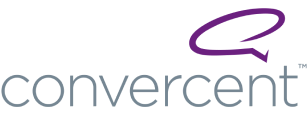By switching to TestRail, Convercent’s QA team was able to fully document test cases so that non-QA staff could assist with test execution and reduce their delivery bottleneck. Documenting test cases in TestRail also allowed QA engineers to get feedback from software developers and product owners, which improved the quality of the test cases. TestRail also provided real-time visibility into their testing progress for new releases, while TestRail’s API allowed them to integrate their entire development and testing toolchain, including Jira, Jenkins, and their proprietary automation framework.
“TestRail improves our collaboration, efficacy, and application quality, which in turn provides the best customer experience.”
Kelli Jordan
Director of Quality Assurance
Document and Streamline Testing Processes
With TestRail, Convercent was able to standardize test management in a centralized system and streamline their testing workflows. TestRail allowed them to document all their test cases in a single place, write repeatable test cases in a structured format, and record test results in a consistent format. More importantly, by giving everyone on the team access to TestRail, they were able to have more meaningful communication between departments, better collaboration across the QA team, and improved visibility into testing efforts.
Get Real-Time Visibility Into Testing Progress
With real-time visibility into testing progress, Jordan was able to start managing workload across the team much more easily, identify blockers faster, and help team members working through complicated issues. She explains, “I use TestRail to help predict workload. I see how many new test cases we write on average per month and it helps me know if we are on track or being outpaced by development. It also allows me to know who is working on a complicated feature and check in on my testers.”
“Sometimes they (my testers) ask, ‘how did you know I was stuck?’ and I say ‘it’s magic!’ But really, the magic is TestRail.”
Kelli Jordan
Director of Quality Assurance
Moreover, giving non-QA project members visibility into the testing workload helped to identify delivery team activities that could speed up the testing phase and support requests to hire more QA professionals. This greater understanding of what is involved in testing aids in conversations related to individual velocity in sprint planning.
The new visibility that came with TestRail also gave the Convercent team a level of flexibility they lacked with spreadsheets. With just one feature tester per delivery team, Jordan points out, “If a person gets sick prior to a deadline, I am able to ask another QA person to execute those test cases in TestRail, which keeps the project on schedule. If we need testers to quickly swarm on a testing effort for an urgent customer request, TestRail supports that.”
Integrate with Test Automation and Jira
As their QA department has expanded delivery team sizes and budgets, TestRail has provided the stability to support key strategic initiatives, like building out a test automation strategy. According to Jordan,
“We start by writing our test cases in TestRail. We use TestRail custom fields to indicate which test cases are automatable and which ones have already been automated. We use metadata to filter for cases that are in need of an update to keep them in sync with the automated tests. We use test runs to create the list of cases that need to be updated, assign the updates to a tester, and record when updates are complete, by using the execution status field. Used this way, TestRail is supporting the project management of the automation effort.”
TestRail allows the team to plan, execute, and report on tests they have automated alongside tests that they run manually.
One of the goals for Jordan and her team was to decrease the amount of time needed to deploy their application to production.




